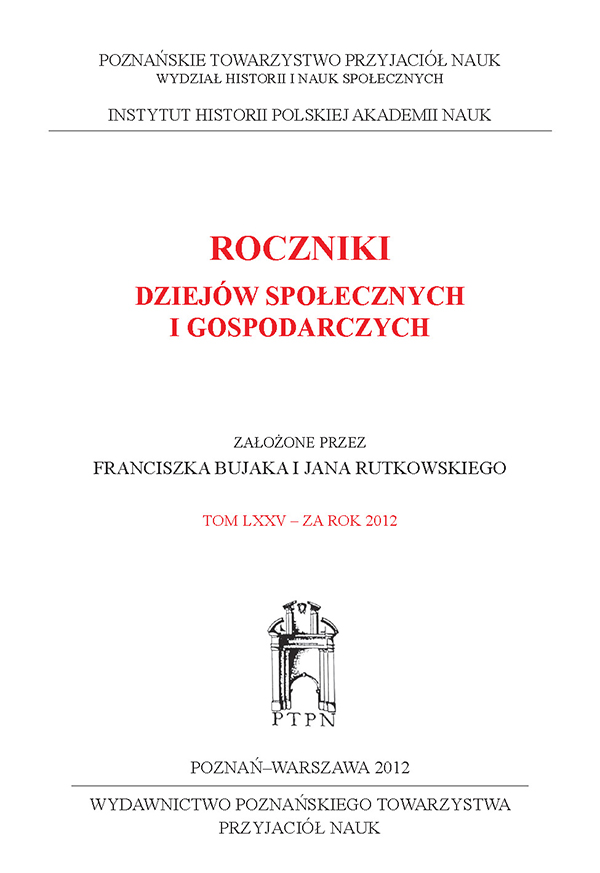Płodność populacji II Rzeczypospolitej. Badanie przy użyciu indeksów Princeton European Fertility Project
DOI:
https://doi.org/10.12775/RDSG.2012.04Abstrakt
The Fertility of the Population of the Second Polish Republic. Research using the Princeton European Fertility Project Indices
(Summary)
An analysis carried out of the fertility of Polish society in the interwar period uses the methodology of the European Fertility Project (EFP), which is based on data relating to the number of births and the population structure in a given period, thus making it possible to assess the disparity between fertility in the society under examination and the theoretical maximum fertility. From the studies presented, it can be concluded unambiguously that in 1931 there were symptoms of a conscious reduction in marital fertility in the population, and therefore that the inhabitants of a major part of the country perceived limiting the number of its offspring as being beneficial and had at its disposal the means to effectively achieve this goal.
Pobrania
Opublikowane
Jak cytować
Numer
Dział
Statystyki
Liczba wyświetleń i pobrań: 598
Liczba cytowań: 0



